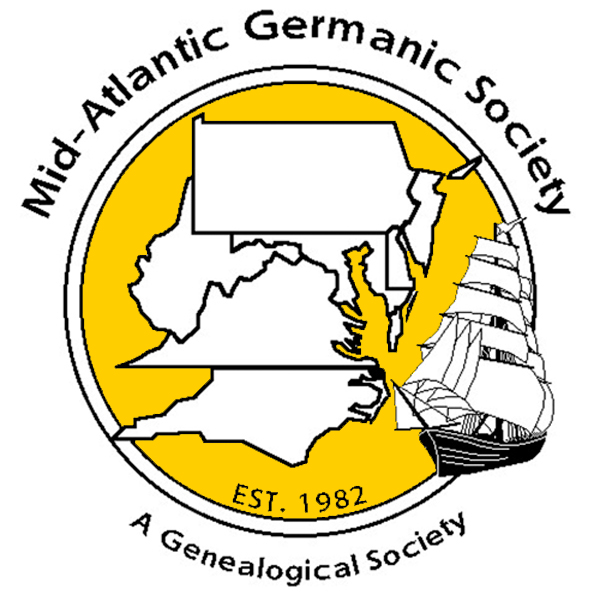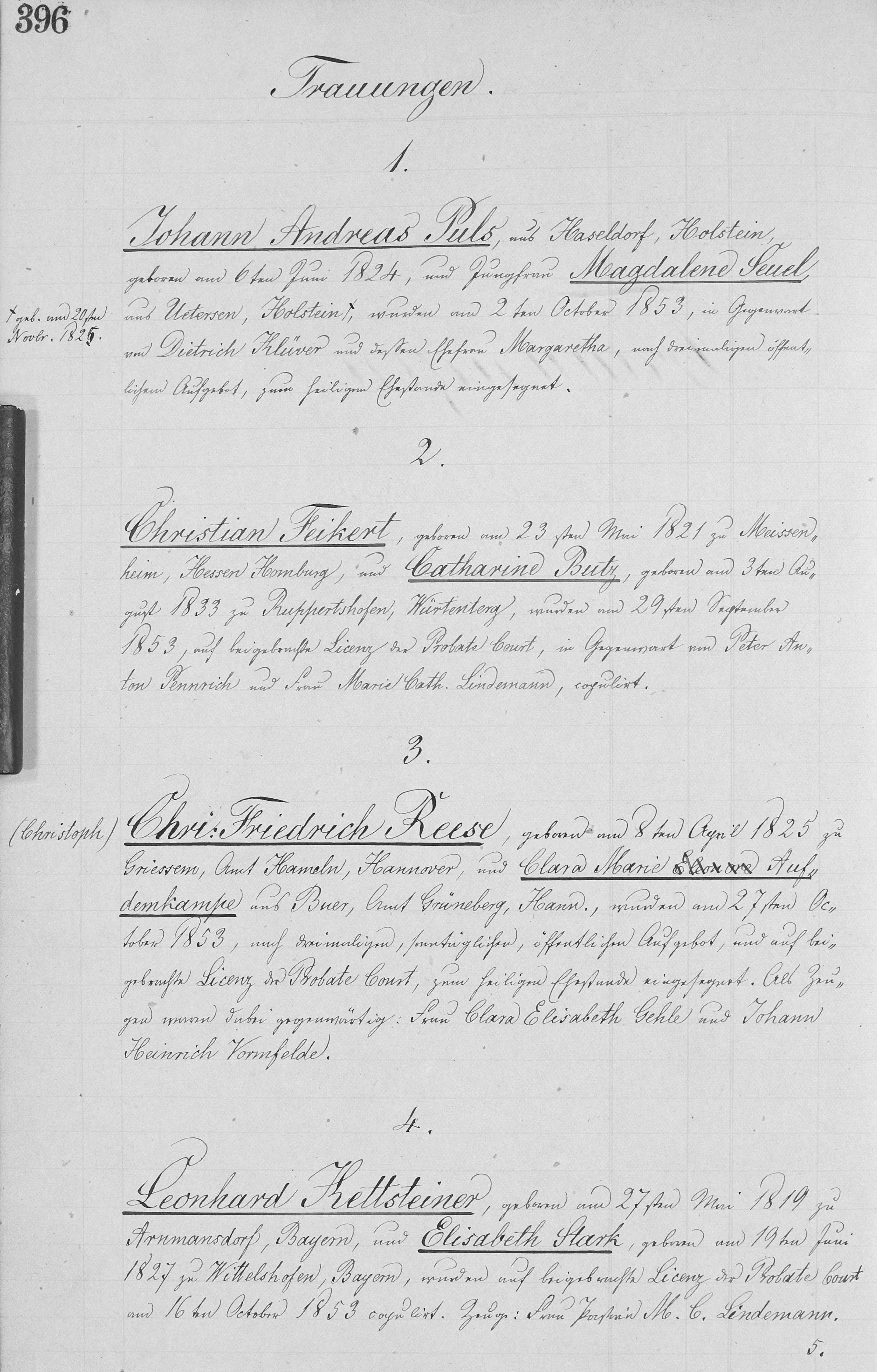
Promoting the Heritage of Our German Ancestors
Trinity Lutheran Church, Cleveland, Ohio, 1853 - 1911
In 1853 a group of members from Zion Lutheran Church in Cleveland, Ohio formed a mission congregation in the west side of the city, an area known as Ohio City. The pastor of the congregation was the Reverend Johann Christian Wilhelm Lindemann. Trinity Lutheran Church was officially formed in 1858. Pastor Lindemann remained with the congregation until August, 1864, when he was appointed as superintendent of what would later become Concordia Lutheran Theological Seminary. His successor was his friend and colleague, Friedrich Conrad Dietrich Wyneken, who served the congregation until 1875. Trinity Church was a German Lutheran congregation that eventually joined the Missouri Synod.
In August, 1853 Pastor Lindemann began recording the official acts of the church in a new book. When making the entries he frequently noted the birthplace and in many cases the birth date of the members. Wyneken was not as diligent about recording place names. The inclusion of place names in baptism records stopped immediately after Pastor Lindemann left. They continued to be mentioned occasionally in marriage and death records until the departure of Pastor Wyneken in 1875, when they also stopped. Using these details, one can easily identify those immigrants in German church records.
The first book of Trinity records included entries for baptisms, confirmations, marriages, and burials for the following time periods. The text in the book is written in German Fraktur script, but names and places are written in Roman script, which is more familiar to English readers.
Baptisms (1853 – 1875)
The baptism records typically contain both the birth and baptism date for the child. They also name the parents. In the earlier records, Rev. Lindemann frequently included the name of the German village where the family lived. If the mother was from a different village, that was listed separately. The pastor also noted whether the child died, presumably within a few years after birth. 1779 baptisms were recorded.
Confirmations (1854 – 1882)
The confirmation records record the name of the child, the date of confirmation, and in most cases the birth date. Pastor Lindemann frequently included the place the child was born. After he left in 1864, the birth place was no longer recorded. Parents' names were not included in these records. 829 confirmations were recorded.
Marriages (1853 – 1911)
The names of the groom and bride were recorded in the marriage records, along with the date of their marriage. The pastor frequently noted when the couple obtained a civil marriage license and whether they were married in the church. Again, Pastor Lindemann frequently included the name of the German village where the groom and bride were born and often their birth date. Pastor Wyneken continued entering birth places for many of his entries, but that stopped after he left in 1875. 1099 marriages were recorded.
Burials (1853 – 1888)
Burial records included the name of the person as well as the death and burial dates. For most people, either their birth date or their age in years, months, and days was entered. For children, the parent's names were included. Starting in 1859, the pastor included the baptism entry number for the child, but not the parents' names. Presumably one could find their names in the baptism record. 1366 burials were recorded.
For adults, the name of the spouse, or a parent for an unmarried person, was included. The maiden name of women was frequently included. For married women, the maiden name was included. Through 1875 the pastor sometimes included the person's place of birth in Germany.
The Trinity Lutheran Church records were microfilmed by FamilySearch and the images are available on their website (https://www.familysearch.org/search/catalog/4092164). Several additional books of records are available in this collection.
Many of the church members were recent immigrants from regions surrounding Osnabrück, in Hannover, and northeastern Westfalen (Westphalia) just to the east. They were from the Kirchenkreise (church districts) of Melle in Hannover and the districts of Herford and Lübbecke in Westfalen. These districts included villages in the Kreis (county) of Wittlage and Melle in Hannover and the Regierungsbezirk (governing district) of Minden in Westfalen. This region became the target area for the project. All of those church books for the late 18th and 19th centuries are available to view (with a membership plan) on the Archion website (https://www.archion.de/).
The author transcribed the entire first book of church records. He then selected marriage records in which one or both of the participants was from the target area. This list was supplemented by parents mentioned in baptism records that included German place names from the same area. Finally, children of those couples found in the baptism records were associated with their parents. Because the baptism records ended in 1875, and no marriage records after that included place names, the author chose 1875 as a cutoff for the records examined for this project.
Using the criteria mentioned above, over 200 couples from the target area were identified using the Trinity records. German church records were then used to discover birth dates for each of the couples. Those records also identified the parents of each person. The birth dates and places for all but a few people were successfully found. The information for the majority of people is assumed to be correct, but it is also probable that there were some incorrect assumptions. The author welcomes any corrections.
The result of this research is a list of German immigrant families who emigrated from the target area to Cleveland roughly between 1840 and 1875. The list includes couples who married in Trinity Church or who had children baptized in the church. In some cases they married in Germany, perhaps had some children there, and then had more children baptized in Trinity Church. This list is available from the author, Bob Greiner.
